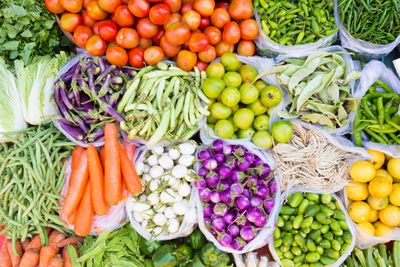About Growing New-to-You Crops
There are probably hundreds, if not more, unusual edible plants that have never found a place in your garden. When looking for exotic vegetables to grow, be sure that they are well suited to your USDA hardiness zone and that you have the proper length growing season for a new and unusual crop. There may be a reason that you have never grown dragon fruit, for instance, which is hardy to zones 9-11.
Interesting Vegetables to Plant
Like oysters but don’t live near the ocean? Try growing salsify, also known as the oyster plant. This cool-season root veggie grows just like a carrot but with the surprising flavor of an oyster. Another cool-season vegetable, romanesco, looks a bit like a bright green brain or a cross between broccoli and cauliflower. It is actually often used in place of the latter in recipes that call for cauliflower and can be cooked just as you would cauliflower. Sunchoke, a member of the sunflower family, is a root veggie also referred to as Jerusalem artichoke in reference to its artichoke-like taste. This cool-season veggie is a terrific source of iron. Celeriac is another root vegetable that looks similar to celery but there the similarities end. While celeriac is low in starch, it is used in comparable ways to the potato. It is a biennial that is more commonly grown as an annual. New-to-you veggies can be exotic or those with a twist to classic crops. Take black radishes, for example. They look just like a radish, only instead of the cheery, red color, they are black – perfect for a slightly macabre crudités platter at Halloween. There are also multi-hued carrots that come in shades of red, yellow, and purple. Or how about growing golden beets, with their yellow flesh, or chioggia beets, which have pale pink and white horizontal striping? Gai Lan, or Chinese broccoli, can be boiled stir-fried or sautéed and may be used in place of broccoli in most recipes, although it has a slightly bitter flavor.
New and Unusual Fruits to Try
For something a little more exotic, try growing unusual fruit – like the aforementioned dragon fruit, an otherworldly looking sweet, scaly fruit that is native to Mexico and Central and South America. Touted as a nutrient-rich superfood, dragon fruit is a member of the cactus family and, as such, thrives in tropical to subtropical climes. Cherimoya fruit is borne off shrub-like trees. With its sweet creamy flesh, cherimoya is often referred to as “custard apple” and has a flavor reminiscent of pineapple, banana, and mango. Cucamelon is an easy to grow plant whose fruit can be eaten in a myriad of ways – pickled, stir-fried, or eaten fresh. The adorable fruit (also called mouse melon) looks just like a doll-sized watermelon. Kiwano melon, or jelly melon, is a spiny, brilliantly colored orange or yellow fruit with a green or yellow interior. Sweet and tart, Kiwano melon is native to Africa and is suited to warmer climates. Lychee looks something like a raspberry but isn’t eaten the same way. The ruby-red skin is peeled back to reveal sweet, translucent pulp. This is just a sampling of the many out-of-the-ordinary crops that are available to the home gardener. You can go wild or keep it more reserved, but I suggest you go wild. After all, gardening is often about experimenting, and waiting oh so patiently for the fruits of your labor is half the fun.
